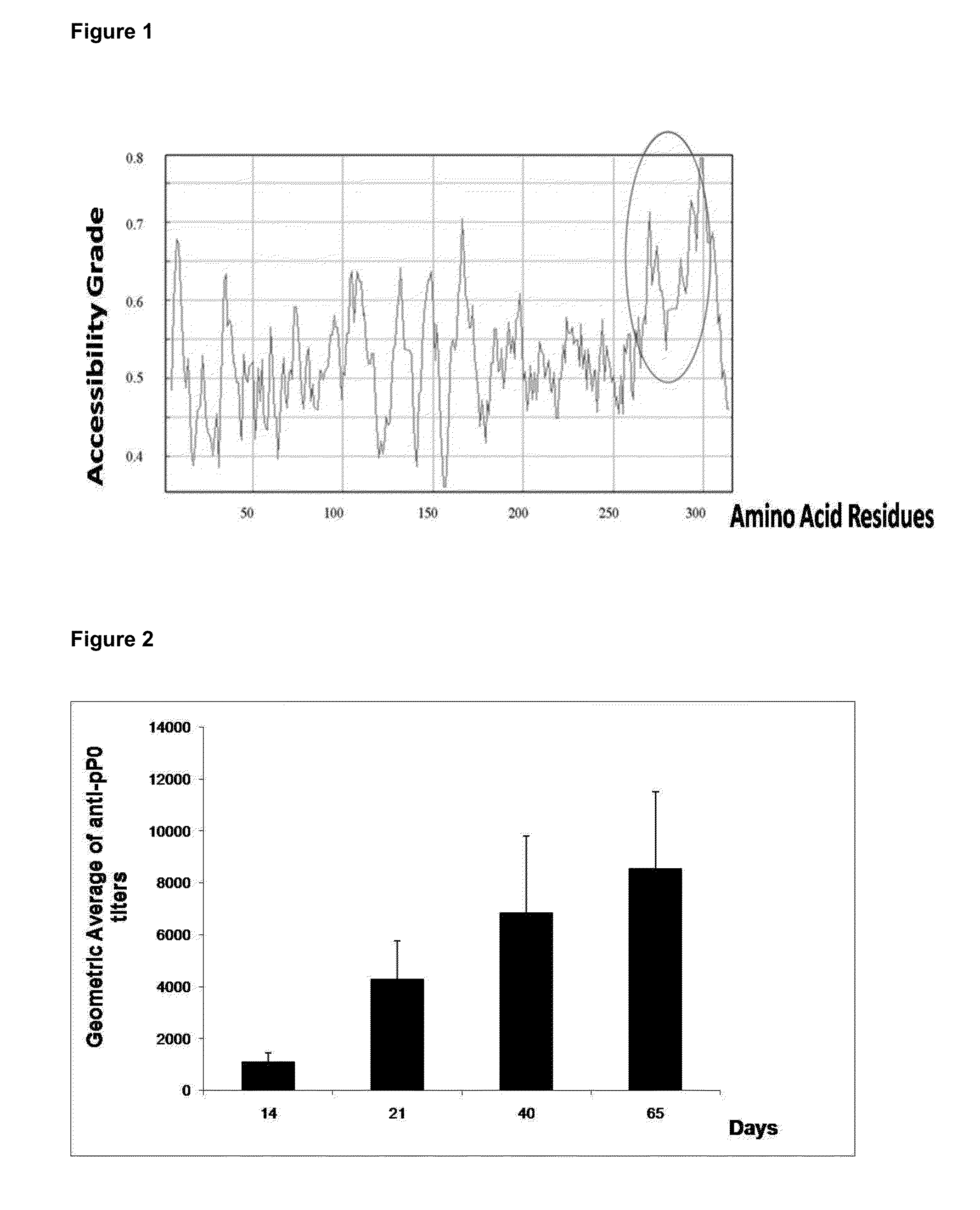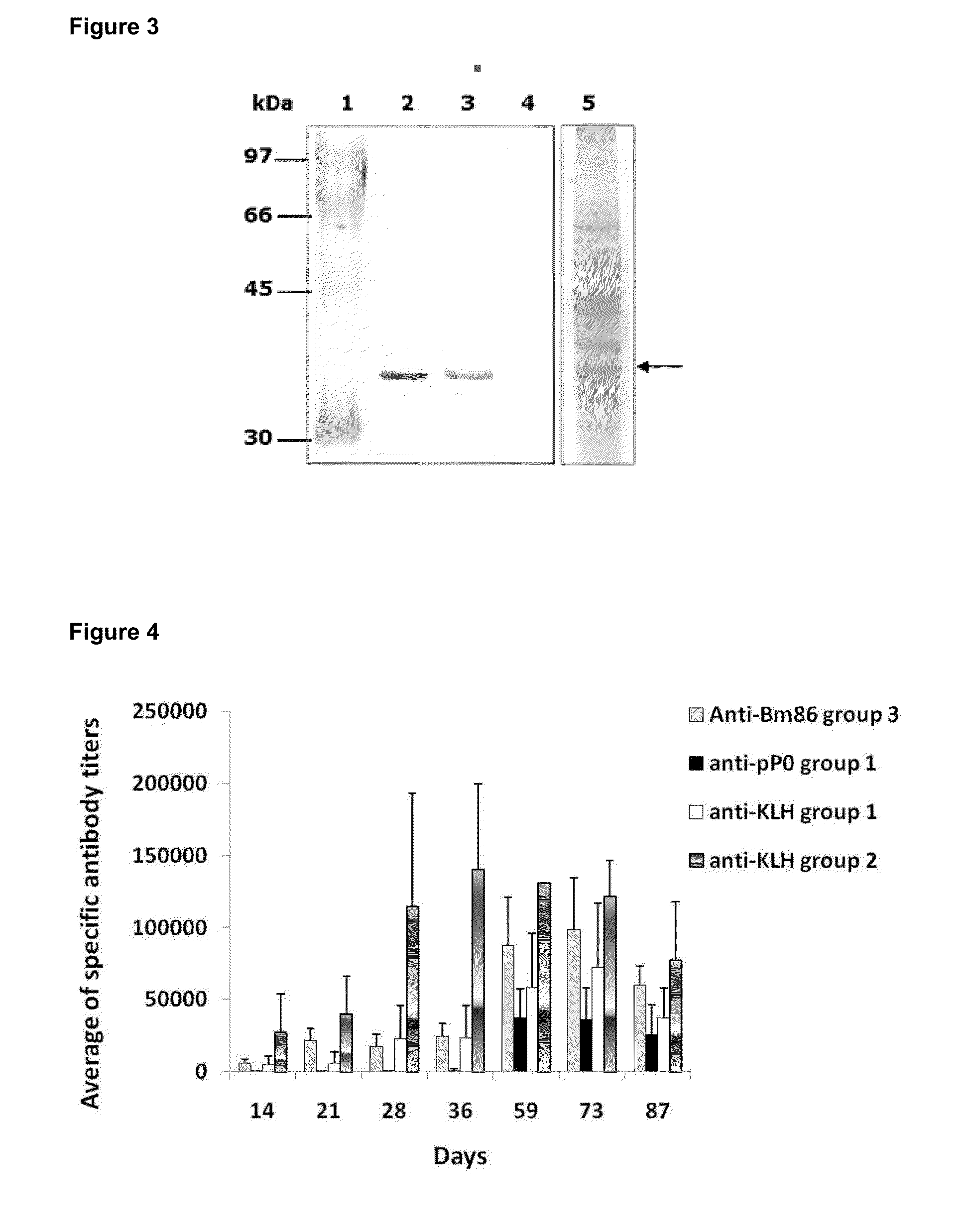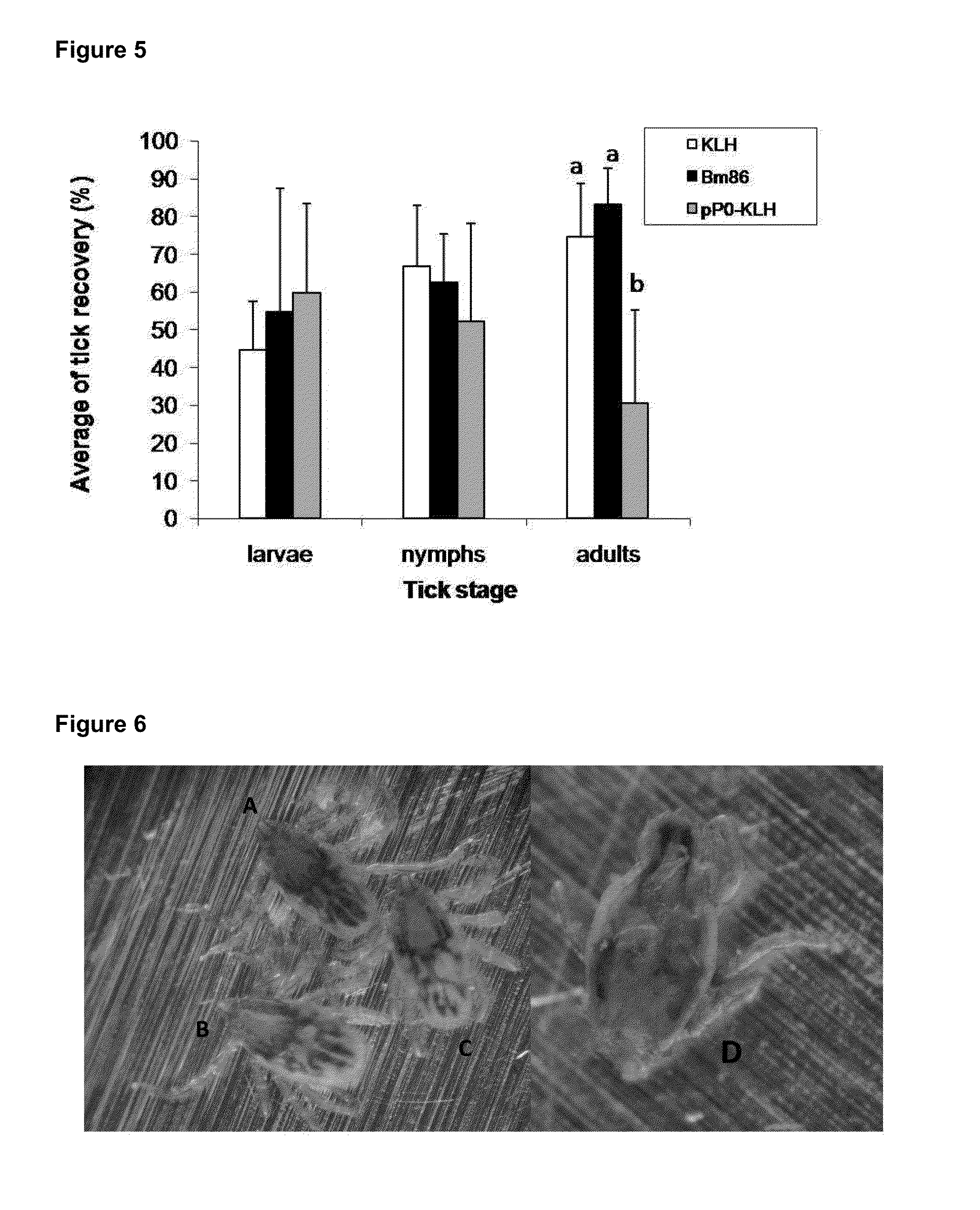Vaccine composition for controlling ectoparasite infestations
a technology for ectoparasites and vaccine compositions, applied in the field of veterinary medicine, can solve the problems of limited use of this protein or its c-terminal region as immunogen to control infestations of ticks and sea lice, and achieve the effects of enhancing the immune response of animals, reducing the damage to viability and biological parameters, and reducing the risk of infection
- Summary
- Abstract
- Description
- Claims
- Application Information
AI Technical Summary
Benefits of technology
Problems solved by technology
Method used
Image
Examples
example 1
Amplification and Cloning of the Nucleotide Sequences Coding for P0 Ribosomal Protein of R. microplus, R. sanguineus and C. rogercresseyi
[0042]Complementary DNAs (cDNAs) were obtained by reverse-transcription reaction from total RNA of R. microplus and R. sanguineus larvae and C. rogercressey adults. The reactions were carried out following the instructions in the “Reverse Transcription System” kit (Promega, USA # A3500). Nucleotide sequences that encode P0 ribosomal protein of R. microplus and R. sanguineus (SEQ ID No. 1 and SEQ ID No. 2) and P0 sequence of C. rogercresseyi were amplified by Polymerase Chain Reaction (PCR) from the obtained cDNAs. As PCR primers for ticks were used synthetic oligonucleotides designed from the nucleotide sequence reported in Genebank for the P0 protein of Haemaphysalis longicornis (http: / / www.ncbi.nlm.nih.gov / Genbank / ) under the accession number EU048401:
Forward Oligonucleotide:5′ ATGGTCAGGGAGGACAAGACCACCTGG 3′Reverse Oligonucleotide:5′ CTAGTCGAAGA...
example 2
Bioinformatic Analysis
[0045]Analysis of amino acid sequence identity were performed using BlastX and ClustalW programs (http: / / www.ebi.ac.uk / ). The deduced 318 amino acid sequences from the amplified DNA sequences of the ticks cDNA were identical between them (SEQ ID NO. 3) and showed a 95% and 93% identity compared to the sequences of P0 ribosomal protein of Haemaphysalis longicornis and Ixodes scapularis (Genebank, accession number DQ066213), respectively. This sequence also showed 96% identity with the polypeptide sequence deduced from partial reading frame included in the TC533 of the Amblyoma variegatum database, and 99% with those deduced from two open reading frames contained in the TC1424 and TC9038, the databases of ESTs from R. appendiculatus and R. microplus, respectively (http: / / compbio.dfci.harvard.edu / index.html).
[0046]The polypeptide sequence corresponding to the P0 protein of R. sanguineus and R. microplus referred as SEQ ID NO. 3 also shows a sequence identity of 70...
example 3
Synthesis of Peptides and Conjugation to the KLH
[0051]The peptides identified as SEQ ID NO. 4, SEQ ID NO. 9 and SEQ ID NO.10, and fragments of 20 amino acids of these peptides were obtained by chemical synthesis and purified by reverse phase chromatography using an HPLC system (High Pressure Liquid Chromatograph). We obtained 15 mg of each synthetic peptide with a purity of 99.3%. The molecular mass of each was verified by mass spectrometry.
[0052]In order to enhance the immunogenicity of the peptides were fused to the KLH protein. The conjugations of the synthetic peptides to KLH were performed using the soluble carbodiimide method. The succinic anhydride was used as spacer agent. The separation of the conjugates was performed by gel filtration chromatography. The final concentration of each conjugate was estimated by the bicinchoninic acid method.
PUM
| Property | Measurement | Unit |
|---|---|---|
| Weight | aaaaa | aaaaa |
| Weight | aaaaa | aaaaa |
| Weight | aaaaa | aaaaa |
Abstract
Description
Claims
Application Information
 Login to View More
Login to View More - R&D
- Intellectual Property
- Life Sciences
- Materials
- Tech Scout
- Unparalleled Data Quality
- Higher Quality Content
- 60% Fewer Hallucinations
Browse by: Latest US Patents, China's latest patents, Technical Efficacy Thesaurus, Application Domain, Technology Topic, Popular Technical Reports.
© 2025 PatSnap. All rights reserved.Legal|Privacy policy|Modern Slavery Act Transparency Statement|Sitemap|About US| Contact US: help@patsnap.com



